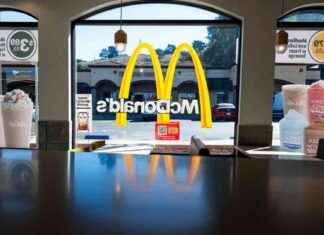MADRID, 31 Jul. (EUROPA PRESS) –
The Ibex 35 ended July with a rise of 0.51%, reaching 9,641.5 points, in a month marked by quarter-point rises in interest rates by the European Central Bank (ECB). and the US Federal Reserve (Fed) to tackle inflation that is gradually moderating.
Specifically, investors have learned this Monday that the forward CPI of the euro area in July moderated to 5.3% but the underlying one stagnated at 5.5%).
The ECB placed its rates last week at 4.25% while its US counterpart raised them to 5.25-5.5%; In both cases, their respective rulers announced that the next decisions will depend on the data that arrives, although most market reports predict that they will remain high for a considerable period of time.
The main indicator of the Spanish market, after a two-month streak of promotions, thus consolidates at the highs for the year above 9,600 points, a level that had not been seen since before the outbreak of the pandemic in February 2020 and, So far this year, it accumulates a revaluation of 17.16%.
The markets have digested the season of corporate results with a positive tone (the six bank stocks in the Spanish index, among others, earned 12,385 million euros, almost 21% more than in the same period last year), now close to its end , and the macroeconomic signs that the economic slowdown will be mild and a “hard landing” will be avoided (this Monday it became known that the GDP of the euro area in the second quarter rebounded by 0.3% compared to the three previous months, period in which it was stable).
On the other hand, in Spain inflation increased by 0.1% in July in relation to the previous month and raised its interannual rate by four tenths, up to 2.3%, mainly due to the rise in the prices of fuels and tourist packages; while GDP grew by 0.4% between April and June (one tenth less than in the previous quarter), while its interannual rate moderated by more than two points, from 4.2% in the first quarter to 1.8 % in the second, due to the lower contribution of the foreign sector.
On the other side of the Atlantic, PCE inflation in the United States – one of the Fed’s reference measures when evaluating its monetary policy – moderated in June to 3% year-on-year, while the underlying fell to 4.1%; this week it will be the turn of the official employment report for July, another point in which the Fed has set its sights.
The most bullish values in the monthly calculation of the Ibex have been Indra (14.16%); Grifols (13.71%); Fluidra (12.84%); Unicaja (10.07%); Santander Bank (8.82%); Merlin Properties (8.04%) and Banco Sabadell (6.17%); by contrast, the most bearish have been Acciona (-12.26%); Enagas (-10.36%); Acciona Energy (-6.53%); Amadeus (-6.43%); Iberdrola (-4.98%) Caixabank (-3.12%) and Inditex (-1.83%).
The rest of the European indices advanced more strongly in July: Paris rose 1.32%; Frankfurt 1.85%; London 2.46% and Milan 5.01%. Wall Street indices, meanwhile, added around 3% for the month.
The selective, despite the fact that it has consolidated itself in the maximum area, now sees the level of the 9,700 integers that it was about to conquer last Thursday, after two consecutive days of declines: on Friday it fell a tenth and this Monday it has fell 0.45%.
After the multitude of corporate results released last week, investors will still have more accounts to learn this week, the vast majority of them from companies listed on the continuous market.
In this context, IAG has led the increases in the selective this Monday with an increase of 3.72%, ahead of ArcelorMittal (2.45%), Mélia Hotels (2.3%), Grifols (1.6%), Rovi (1.35%) and Repsol (1.16%).
On the contrary, Cellnex has positioned itself as the value with the worst performance at the end of the session (-3.28%), ahead of Acciona (-2.43%), Indra (-2.07%), Unicaja (- 1.67%), BBVA (-1.66%); Mapfre (-1.61%); Banco Sabadell (-1.54%) and Telefónica (-1.32%).
The European stock markets have closed with a mixed sign: London has risen 0.07%; Paris 0.28% and Milan 0.49%, while Frankfurt has lost 0.14%.
In the raw materials market, a barrel of Brent appreciated 0.61% at the close of the session (it appreciated 13.4% in the month), up to 85.51 dollars, while West Texas Intermediate rose stood at $81.43, 1.05% more.
In the secondary debt market, interest on the long-term Spanish bond closed at 3.505%, around seven basis points more than at the end of June, while the risk premium (the differential with the German bond) remained at 101.8 points.
On the other hand, the euro was cheaper at the close of the negotiation by 0.04% against the dollar, reaching a market exchange rate of 1.1012 dollars for each euro; although in July the European currency advanced almost 1% with respect to the ‘green ticket’.







